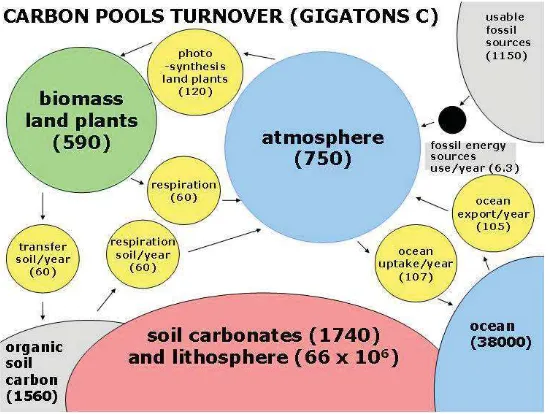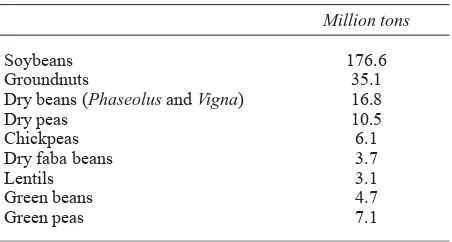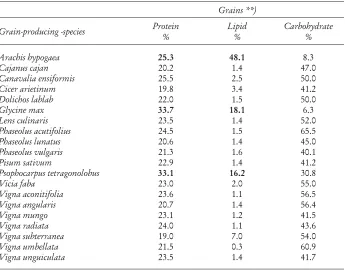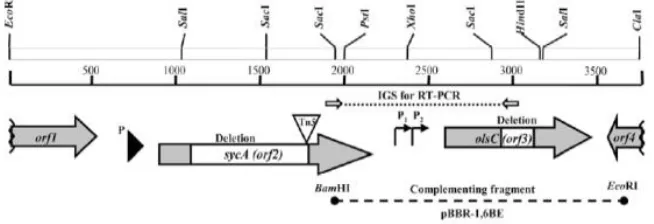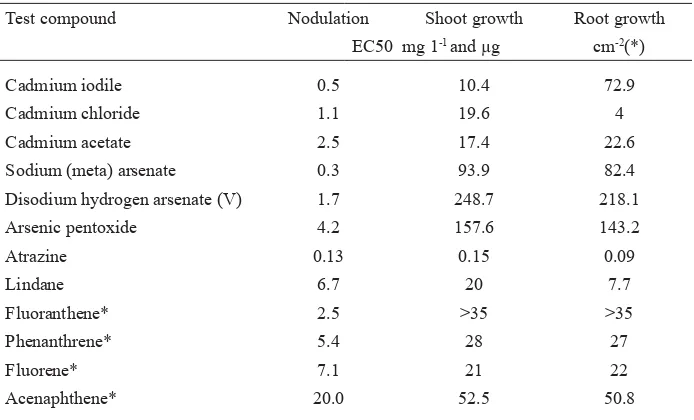BIOTEST SYSTEM
1Dietrich Werner 2
ABSTRACT
The major pools and turnover rates of the global carbon (C) cycles are presented and compared to the human production of CO2from the burning of fossil fuels (e.g. coal and oil) and geothermal fuels (natural gases), both categorized as non-renewable energy resources which in amount reaches around 6.5 Gigatons C per year. These pools that serve as C-holding stallions are in the atmosphere, the land plant biomass, the organic soils carbon, the ocean carbon and the lithosphere. In another related case, the present focus in the area of nitrogen Þ xation is discussed with data on world production of grain legumes compared to cereals production and nitrogen fertilizer use. The focus to understand the molecular biology of the legume-rhizobia symbiosis as a major contributor to nitrogen Þ xation is in the areas of signal exchange between host plants and rhizobia in the rhizophere including the nod factor signalling, the infection and nodule compartmentation and the soils stress factors affecting the symbiosis. The use of the Legume-Rhizobia symbiosis as a biotest system for soil contaminants includes data for cadmium, arsenate, atrazine, lindane, ß uoranthene, phenantrene and acenaphthene and also results on the mechanism, why the symbiotic system is more sensitive than test systems with plant growth parameters.
Keywords : Non-renewable energy source, plant biomass, CO2, nodule
I. POOLS AND TURNOVER- RATES OF THE GLOBAL CARBON CYCLE
Our planet earth contains about 1017t (108 Giga t) carbon (C). Most of the carbon came from meteorites (chondrites), which included up to 3.5 % carbon. Some of this carbon enters as CO2 into the atmosphere and after cooling into the oceans, which are until today the second largest pool of carbon dioxide (38 000 Giga t of C) after the lithosphere with around 7 x 107Gt (Figure 1). The pools of the biosphere are by several orders of magnitude smaller, and they will be compared here with the anthropogenic annual production of CO2
1 Paper presented in International Workshop on Rhizosphere Technology in Sustaining Plan Growth in Adverse Soils and Prediction for Carbon Trade, Banjarmasin, Indonesia, 25-26 February 2008.
carbon by burning of coal, oil and gas. This ranges about 6.3-6.5 Giga t C. This moves Þ rst completely into the atmosphere, where 750 Giga t of C are present. The two other important biosphere pools are the land plant-biomass with 590 Giga t C and the organic soil carbon with 1560 Giga t C. The land plants Þ x about 120 Giga t C annually, from which 50% go back directly to the atmosphere by respiration, the other 50 %, equivalent to 60 Giga t C into the organic soil carbon. From this carbon pool, about 62 Giga t C go back by soil respiration into the atmosphere. This difference of 2 Giga t C seems to be small, but it is about 30% of all carbon dioxide produced by use of fossil (non-renewable) energy resources. The oceans take up about 2 Giga t C more than they release, so that for the land area and the oceans the natural turnover rates are in a remarkable equilibrium (Figure 1). When we compare the pool of all available fossil energy resources, which are about 1150 Giga t C, we can conclude, if all this would be concentrated in the atmospheric pool, the CO2 concentration there can not increase by more than a factor of 2.5. Therefore many experiments with a tripled carbon dioxide concentration are ecologically exaggerated. What can we do, besides replacing the carbon-energy cycle of our 21 century technology gradually by a hydrogen- and electricity-energy cycle? First we need more information on the so called missing sink, since the carbon dioxide concentration in the air does not reß ect the present data of the carbon pools and turnover rates.
When we look to the geographic regions from the south pole to the equator and further to the north pole including land and oceans, we observe two large zones as CO2 sinks at 30 oS and 60 oN , whereas regions around the equator are major CO2sources (Enting and Mansbridge, 1991). A major limitation for these data is however, the very limited number of stations, located more by historical reasons than by geographic arguments on islands scattered in the oceans of the world. Deforestations and land clearance in developing countries alone contribute about 1.6 G t C annually, about a quarter of the global carbon dioxide emission (Murdiyarso, 2007)
II. THE NITROGEN CYCLE: LEGUME NITROGEN FIXATION More than 60% of the worlds legume grain production is occupied by soybeans (Table 1). Therefore, this crop has been covered in this article by several chapters as a model for several other grain legumes in which our knowledge is much less developed due to the limited areas of production and therefore lower economical impact. However for the people in large areas, especially in South America and Africa, other grain legumes are decisive for the diets of the population and for the production of the small farmers. For sustainable agriculture, also fodder legumes and legumes used as green manure are equally important. As examples of recent progress in understanding production and BNF (biological nitrogen Þ xation) in these legumes, the following species will be covered: Beans (Phaseolus sp. and Vigna), chickpea (Cicer arietinum), pigeon pea (Cajanus cajan), peanuts (Arachis sp.), Mucuna and other tropical legumes. Further, in order to acquire brief information on nutrition value of grain legumes, in Table 2 are summarized their protein, lipid, and carborhydrate contents.
Table 1. World Production (FAO, 2002)
Million tons
Soybeans 176.6
Groundnuts 35.1
Dry beans (Phaseolus and Vigna) 16.8
Dry peas 10.5
Chickpeas 6.1
Dry faba beans 3.7
Lentils 3.1
Green beans 4.7
Table 2. Protein, lipid and carbohydrate content of dry seeds of grain
**) Percentage is based on dry weight of gram seeds
The protein contents in most species range 20 to 30% protein in dry seeds. Only Psophocarpus tetragonolobus with 33% protein, Glycine max with about 34% and Lupinus mutabilis with 48% are signiÞ cantly beyond this range. Very low is the lipid content with 1 to 2% in Vigna,Phaseolus,Pisum,Cajanus,Lens andDolichos species. Three genera with a protein content beyond 25%, have high lipid concentrations with 16% in Psophocarpus tetragonolobus, 18% in Glycine max and up to 48% in Arachis hypogaea (peanuts) (Werner, 2005).
III. SOIL STRESS FACTORS AFFECTING THE SYMBIOSIS
• soil water stress (osmotic stress) • nutrient stress
• pH stress and competition stress (Werner, 2007).
The best studied system for osmotic stress in rhizobia is Sinorhizobium meliloti, which accumulates very different compatible solutes such as glutamic acid, glycine betaine, proline betaine, trehalose and N-acetylglutaminylglutamine amide (Botsford, 1984; Boscari et al., 2002). The basic understanding of osmoregulation is even more advanced in Escherichia coli and Bacillus subtilis (Schiefneret al., 2004; Holtmann and Bremer, 2004). In Bacillus subtilis there are two classes of osmotically regulated genes:
1. genes, which are permanently switched on at high osmolarity, as the Opu Transporters and genes for the proline biosynthesis. Altogether more than 100 genes belong to this group, most of them with unknown functions. A central role has the two component regulatory system called DegS/DegU (Steilet al., 2003)
2. genes, which are only transiently up-regulated, such as the yhaSTU genes , responsible for K+/Na+export. Mechanosensitive channel proteins play hereby an important role.
in the signalling pathway for nod factor reception (Wais et al., 2002). In many soils, the limitation of available phosphate is a major constrain and also for this element, the symbiotic bacteria and the legume host plants compete for this element. The phosphorus concentration in Þ x+ nodules is about 60 % higher than in root tissue, but the same as in Þ x–nodules (Kuhlmann et al., 1982). On the other side, the chloride concentration in both types of nodules is reduced by about 80 % compared to that in roots (both 20 days old).
Table 3. Calcium, iron and cobalt accumulation in root hairs of soybean (Glycine max)
Ppm (dry matter)
Element Soybean root hair Soybean root Wheat root hair Wheat root
K 11740 ± 2450 12840 ± 2640 4670 ± 1010 4780 ± 990
S 530 ± 165 560 ± 170 180 ± 55 190 ± 60
Fe 414 ± 138 31 ± 5 120 ± 35 44 ± 26
Co 7.9 ± 3.8 0.88 ± 0.4 2.6 ± 0.8 1.3 ± 1.1
Ca 2200 ± 460 287 ± 70 246 ± 60 288 ± 70
Mo 3.1 ± 0.5 5.4 ± 0.7 0.6 ± 0.12 0.5 ± 0.3
Source: Werner et al. (1985)
Figure 1. Genetic and physical maps of the 3,761-bp EcoRI-ClaI region from Rhizobium tropici CIAT899 analyzed in this study (accession number AY954450). Selected restriction sites are shown. Four open reading frames (ORF) (represented by arrows) were detected. The site of the Tn5insertion located in sycA between nucleotides C1763 and T1764 is indicated by an open triangle. Nonpolar deletion mutants lacking the regions shown in white were generated in sycAandolsC. Predicted promoters are shown as thin arrows. The dotted line represents the intergenic spacer between sycAandolsCsubjected to reverse transcriptase-polymerase chain reaction (RT-PCR) analysis (shown in D). The dashed line shows the location of the 1.66-kb BamHI-EcoRI fragment cloned into pBBR-MCS5 and used to complement strain 899-olsCţ1. (Rojas-Jimenezet al., 2005).
IV. THE LEGUME-RHIZOBIA SYMBIOSIS AS BIOTEST SYSTEMS FOR SOIL CONTAMINANTS
A. Soil Biotests
Compared to biotests for groundwater and surface water quality, the number of accepted and sensitive biotests for soil contamination is rather limited. Growth effects on a number of agricultural plants such as Avena sativa, Brassica rapa or Phaseolus aureus are used or effects on root growth. In general, plants are suitable as bioindicators of soil health, due to their intensive root system and the large contact area between the soil and the biomonitoring organisms. The basis is a long tradition of using plants to indicate speciÞ c soil conditions such as Salicornia species for salt affected soils, Teesdalia nudicaulis for acid soils and Mercurialis annua for alkaline soils. Well studied are the use of sensitive plant species against heavy metal contamination and the colonization of these areas by metal tolerant populations. As speciÞ c biochemical markers, phytochelatins, speciÞ c enzyme activities such as peroxidise activity and the polyamines have been used. Changes in microbial populations and activities are another area of bioindicators of soil health. Carbon transformations are widely used, but not very speciÞ c, for they react against any other environmental stress on the microorganisms such as temperature, soil pH and water conditions.
Other bioindicator systems use extrapolation in ecosystems as the factor method. The ratio of PEC (Predicted Environmental Concentration) over by PNEC (Predicted No Effect Concentration) larger than 1 is considered as an environmental risk. Also for other methods the no observed effect concentration is of central importance. Therefore the development of a more sensitive biotest than the established systems is very important for risk assessment.
B. The Rhizobium-Legume Symbiosis as a New Sensitive Biotest
Table 4. EC50 for nodulation, shoot growth and root growth in the system Medicago sativa/Sinorhizobium meliloti
Test compound Nodulation Shoot growth Root growth
EC50 mg 1-1andg cm-2(*)
Cadmium iodile 0.5 10.4 72.9
Cadmium chloride 1.1 19.6 4
Cadmium acetate 2.5 17.4 22.6
Sodium (meta) arsenate 0.3 93.9 82.4
Disodium hydrogen arsenate (V) 1.7 248.7 218.1
Arsenic pentoxide 4.2 157.6 143.2
Atrazine 0.13 0.15 0.09
Lindane 6.7 20 7.7
Fluoranthene* 2.5 >35 >35
Phenanthrene* 5.4 28 27
Fluorene* 7.1 21 22
Acenaphthene* 20.0 52.5 50.8
Note : For cadmium and arsenic compounds the nodulation biotest is more sensitive by a factor af 10 to 100 compared to shoot growth and root growth. Against organic contaminants such as ß uoranthene and acenaphthen the nodulation biotest is more sensitive by a factor of 2 to 10. A factor of 10 of higher sensitivity is a very signiÞ cant progress in evaluation the potential risk in the food chain from the soil to the plant and to humans and animals.
C. Gene Expression in the Symbiotic System Modulated by the Xenobiotics Cadmium and Fluoranthene
D. Phytoremediation
The concept of phytoremediation has gained increasing general interest in the last years. Phytoremediation is the use of plants to reduce pollutants in the soil by enrichment in plant material and removal of these plant parts. The application of phytoremediation is especially attractive when hyperaccumulating species for different heavy metals are used, such as Psychotria douarrei for nickel, Thlaspi caerulescens for cadmium, Ipomoea alpine for copper or Macadamia neurophylla for manganese. From a joint study at the Semipalatinks Test Site, very interesting results have been found for radionuclide accumulation in speciÞ c plant species from this region. In the legume Glycyrrhiza uralensis a 10 to 100 fold increase of ß-radionuclides in the plant ash of above ground material compared to the soil has been found. For root ash the ratio was between 20 to 160 even higher. For cesium137 the ratio was between 2 to 40 for ash from different plants compared to the soil. The use of this and other endemic species from this region is very promissing aspect for phytoremediation of this unique contaminated area where more than 20% of all atomic bombs have exploded on this planet. For many countries in Asia and Europe it is especially important to realize that from unvegetated soils there is a signiÞ cant transfer of radionuclides via the air into the food chain of many other countries of this planet which could continue over long periods of time if we do nothing (Werner et al., 2000).
REFERENCES
Augé, R.M. 2001. Water relations, drought and vesicular-arbuscular mycorrhizal symbiosis. Mycorrhiza 11: 3-42.
Barea, J.M., R. Azcón, and C. Azcón-Aguilar. 2002a. Mycorrhizosphere interactions to improve plant fitness and soil quality. Antonie van Leeuwenhoek 81: 343-351.
Barea, J.M., M. Gryndler, Ph. Lemanceau, H. Schüepp, and R. Azcón, R. 2002b. The rhizosphere of mycorrizal plants, in Mycorrhiza Technology. In: S. Gianinazzi, H. Schüepp, J.M. Barea, and K. Haselwandter (Eds.). Agriculture, from Genes to Bioproduction. Birkhäuser, Basel. 1.
Barea, J.M., D Werner, C. Azcón-Aguilar, and R. Azcón. 2005. Interactions of arbuscular mycorrhiza and nitrogen Þ xing symbiosis in sustainable agriculture.In: D. Werner and W.E. Newton (Eds.). Agriculture, Forestry, Ecology and the Environment. Springer, Dordrecht. pp. 199-222.
Bianciotto, V., A. Genre, P. Jargeat, E. Lumini, G. Bécard, and P. Bonfange. 2004. Vertical transmission of endobacteria in the arbuscular mycorrhizal fungusGigaspora margarita through vegetative spore generations. Applied and Environmental Microbiology 70: 3600-3608.
Bonfante, P. 2005. The rhizosphere and rhizoplane continuum: Where plants, fungi and bacteria meet. In: Rhizosphere 2004 – Perspectives and Challenges – A tribute to Lorenz Hiltner. GSF-Bericht 05/05, Neuherberg. 99. Boscari, A., K. Mandon, L. Dupont, M.-C. Poggi, and D. Le Rudulier. 2002. BetS
is a major glycine betaine/proline betaine transporter required for early osmotic adjustment in Sinorhizobium meliloti. Journal of Bacteriology 184: 2654-2663.
Botsford, J.L. 1984. Osmoregulation in R. meliloti: inhibition of growth by salts. Archives of Microbiology 137: 124-127.
Boumahdi, M., P. Mary, and J.P. Hornez. 2001. Changes in fatty acid composition and degree of unsaturation of (brady)rhizobia as a response to phases of growth, reduced water activities and mild desiccation. Antonie Van Leeuwenhoek 79: 73-79.
Enting, I.G. and J.V. Mansbridge. 1991. Latitudinal distribution of sources and sinks of CO2results of an inversion study. Tellus 43B: 156-170.
FAO. 2002. Yearbook 2001: Production. Vol. 55. Food and Agriculture Organization of the United Nations, Rome.
Glenn, A.R., W.G. Reeve, R.P. Tiwari, and M.J. Dilworth. 1999. Acid tolerance in root nodule bacteria. In J. Chadvick and G. Cardew (Eds.) Bacterial Responses to pH. John Wiley, Chichester. 112.
Holtmann, G. and E. Bremer. 2004. Thermoprotection of Bacillus subtilis by glycine betaine and structurally related compatible solutes: involvement of Opu-transporters. Journal of Bacteriology 186: 1683-1693.
Kuhlmann, K.-P., R. Stripf, W. Wätjen, F.W. Richter, F. Gloystein, and D. Werner. 1982. Mineral composition of effective and ineffective nodules of Glycine max in comparison to roots: Characterization of developmental stages by differences in nitrogen, hydrogen, sulfur, molybdenum, potassium and calcium content. Angewandte Botanik 56: 315-323.
Murdiyarso, D. 2007. Global warming, deforestation and Indonesia. CIFOR Newsletter online No 44.
Neumann, H. and D. Werner. 2000. Gene expression of Medicago sativa inoculated with Sinorhizobium meliloti as modulated by xenobiotics. Zeitschrift für Naturforschung 55c: 222-232.
Poole, K.K. 1999. Summary. In: J. Chadvick and G. Cardew (Eds.). Bacterial Responses to pH. John Wiley, Chichester. 112.
Purcell, L.C. and C.A. King. 1996. Drought and nitrogen source effects on nitrogen nutrition, seed, growth, and yield in soybean. Journal of Plant Nutrition 19: 969-993.
Rojas-Jimenez, K., C. Sohlenkamp, O. Geiger, E. Martinez-Romero, D. Werner, and P. Vinuesa. 2005. A CIC chloride chanel homolog and ornithine-containing membrane lipids of Rhizobium tropici CIAT899 are involved in symbiotic efÞ ciency and acid tolerance. Molecular Plant-Microbe Interactions 11: 1175-1185.
Ruiz-Lozano, J.M., C. Collados, J.M. Barea, and R. Azcón. 2001. Arbuscular mycorrhizal symbiosis can alleviate drought-induced nodule senescence in soybean plants, New Phytologist 151: 493-502.
Sadowsky, M.J., H.H. Keyser, and B.B. Bohlool. 1983. Biochemical characterization of fast- and slow-growing rhizobia that nodulate soybeans. International Journal of Systematic Bacteriology 33: 716-722.
Sadowsky, M.J. 2005. Stress factors inß uencing symbiotic nitrogen Þ xation. In: D. Werner and W.E. Newton (Eds.). Agriculture, Forestry, Ecology and the Environment. Springer, Dordrecht. 89.
Schiefner, A., J. Breed, L. Bösser, S. Kneip, J. Gade, G. Holtmann, K. Diedrichs, W. Welte, and E. Bremer. 2004. Cation-phi interactions as determinants for binding of the compatible solutes glycine betaine and proline betaine by the periplasmic ligand-binding protein ProX from Escherichia coli. Journal of Biological Chemistry 279: 5588-5596.
Souci, S., W. Fachmann, and H. Kraut. 1994. Die Zusammensetzung der Lebensmittel. Nährwert-Tabellen 1986/87. 5. Auß . Stuttgart: medpharm ScientiÞ c Publ.
Steele, H.L., P. Vinuesa, and D. Werner. 2003. A Rhizobium tropici CIAT899 leucine biosynthesis mutant which can survive and grow at pH 3.5. Biology and Fertility of Soils 38: 84-88.
Vance, C.P. 2001. Symbiotic nitrogen Þ xation and phosphorus acquisition. Plant nutrition in a world of declining renevable resources. Plant Physiology 127: 390-397.
Vinuesa, P., F. Neumann-Silkow, C. Pacios-Bras, H.P. Spaink, E. Martinez-Romero, and D. Werner. 2003. Genetic analysis of a pH-regulated operon fromRhizobium tropici CIAT899 involved in acid tolerance and nodulation competitiveness. Molecular Plant-Microbe Interactions 16: 159-168. Vinuesa, P., M. Leon-Barrios, C. Silva, A. Willems, A. Jarabo-Lorenzo, R.
Perez-Galdona, D. Werner, and E. Martinez-Romero. 2005a. Bradyrhizobium canariense sp. nov., an acid-tolerant endosymbiont that nodulates endemic genistoid legumes (Papilionoideae:Genisteae) from the Canary Islands, along with Bradyrhizobium japonicum bv. Genistearum, Bradyrhizobium genospeciesĮ and Bradyrhizobium genospecies ȕ. International Journal of Systematic and Evolutionary Microbiology 55: 569-575.
Vinuesa, P., C. Silva, D. Werner, and E. Martinez-Romero 2005b. Population genetics and phytogenetic inference in bacterial molecular systematics: the role of migration and recombination in Bradyrhizobium species cohesion and delineation. Molecular Phylogenetics and Evolution 34: 29-54. Wais, R.J., D.H. Keating, and S.R. Long. 2002. Structure-function analysis
of nod factor-induced root hair calcium spiking in Rhizobium-legume symbiosis. Plant Physiology 129: 211-224.
Werner, D., K.-P- Kuhlmann, F. Gloystein, and F.W. Richter. 1985. Calcium, iron and cobalt accumulation in root hairs of soybean (Glycine max). Zeitschrift für Naturforschung 40c: 912-913.
Werner, D., H. Neumann, H. Steele, A. Wetzel, R. Magasheva, and R. Plisak. 2000. Soil biotests and phytoremediation with the legume-Rhizobium symbiosis.In: F.O. Pedrosa, M. Hungria, M.G. Yates and W.E. Newton (Eds.). Nitrogen Fixation: From Molecules to Crop Productivity. Kluwer Acad. Publ., Dordrecht. pp. 571-574.
Werner, D., S.K. Mahna, V. Mahobia, B.N. Prasad, J.M. Barea, H. Thierfelder, P. Müller, and P. Vinuesa. 2005. Sustainable agriculture/forestry and biological nitrogen Þ xation. In: Y.-P. Wang, M. Lin, Z.X. Tian, C. Elmerich and W.E. Newton (Eds.) Biological Nitrogen Fixation, Sustainable Agriculture and the Environment. Proceedings of the 14th Int. Nitrogen Fixation Congress. Current Plant Science and Biotechnology in Agriculture, Vol. 41. Springer, Dordrecht. pp. 13-17.
Werner, D. 2007. Molecular biology and ecology of the Rhizobium legume symbiosis In R. Pinton, Z. Varanini and P. Nannipieri (Eds.). The Rhizosphere, 2nd Ed. CRC Press, Boca Raton, USA. pp. 237-266.
Wetzel, A., G. Klante, and D. Werner. 1991. Die Nodulation in der Leguminosen-Rhizobien Symbiose als sensibler Wirkungsparameter in Biotoxizitätstests mit PAK. Zeitschrift für Umweltchemie und Ökotoxikologie 3: 265-271. Wetzel, A., T. Alexander, S. Brandt, R. Haas, and D. Werner. 1994. Reduction
byß uoranthene of copper and lead accumulation in Triticum aestivum L. Bulletin of Environmental Contamination and Toxicology 53: 856-862. Wetzel, A. and D. Werner. 1995. Ecotoxicological evaluation of contaminated
soil using the legume root nodule symbiosis as effect parameter. Environmental Toxicology and Water Quality 10: 127-133.
Wetzel, A., M. Parniske, and D. Werner. 1995. The pleiotrophic effects of ß uoanthene on anthocyanin synthesis and nodulation of Medicago sativa is reversed by the plant ß avone luteolin. Bulletin of Environmental Contamination and Toxicology 54: 633-639.
